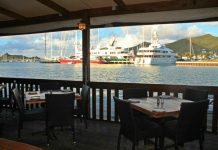When Speeding Up Traffic Takes Top Priority, Everybody Loses
By: Victor Dover FAICP
The bridge collapse at Florida International University along SW Eighth Street this month made international news, and it was an unspeakable tragedy for the victims and their families. Experts will be analyzing the rubble and all the details to find out why this happened.
They will undoubtedly find “safety was lacking”—but let’s admit safety, after all, wasn’t the priority. Speeding up traffic was.
According to the Miami Herald, decisionmakers at the University, the construction company, and Florida Department of Transportation reopened the street to traffic while workers were still testing, tensioning and adjusting the partially-built bridge overhead. Why reopen the street before the structure was tested and inspected and ready? Because they were seeking to minimize delays to vehicular traffic.Free-flowing car traffic was the central inspiration behind every aspect of this bridge. The now-infamous “Accelerated Bridge Construction” technique was being employed in this case specifically to reduce the times cars would be stopped or diverted during construction. As a Miami Herald editorial later that week pointed out, “The whole point of Accelerated Bridge Construction — ABC — which is how the FIU bridge was being expedited, is to ensure the least interruption to traffic, the fewest street closures possible. This accommodation to drivers’ frustrations must be rethought.”
It’s clear that among official priorities, traffic flow eclipsed public safety long ago on Eighth Street. The corridor metastasized into a monster highway with eight, nine, ten lanes and no meaningful provision for walking, biking or transit, or even trees, despite its gigantic 130-foot right-of-way. We are correctly focused right now on the six victims killed under the bridge collapse. But in the last 4 years, more than 2200 crashes occurred along this part of the corridor, and at least 12 other people died in those collisions.
Why does Eighth Street look like it does? It’s because the whole surrounding environment, and even the original campus itself, was designed as disconnected sprawl and around single-occupant car trips. Slammed with the inevitable congestion, FDOT supersized the road. But adding capacity to fight traffic jams always has the opposite of the intended effect, and it just generated more sprawl and more cars and more congestion. FIU rightly wants to change this now, and their goal to boost transit and integrate more seamlessly with a revitalized, walkable Sweetwater deserves applause.
The thing is, “pedestrian bridges” are not really about providing safety and delight to pedestrians.
The real purpose of the bridge was to reduce the pesky crosswalks and speed up traffic, to minimize signal phases when motorists would have to wait for people to cross on foot. Meanwhile, the effect of such bridges is to permanently surrender the at-grade pedestrian experience. (The grand Champs-Elysees in Paris is sixteen lanes wide, but you don’t need a bridge to cross it, and a bridge would be an unthinkable scar on the face of that city.) Climbing up to bridges is usually inconvenient for pedestrians, not to mention going out of their way to get to the bridge from the intersections where they’d rather cross, scarce as those are. As transportation planner Jim Charlier once quipped, “The real benefit of pedestrian bridges is to provide shade for the pedestrians that still insist on crossing below them, at ground level.” That’s why FDOT and the County keep installing walls and fences beneath the bridges at Vizcaya and at the new University of Miami bridge, escalating a battle with human nature. Police reportedly launched a ticketing blitz in the area last month, targeting pedestrians, perhaps as a reaction to recent pedestrian deaths on its hard-to-cross thoroughfares.
In all probability, the FIU bridge will be rebuilt, sturdier this time. It’s hard to blame them, given that healing Eighth Street itself may be a long way off. But wouldn’t a real city, with safe streets and delightful ways to get where we’re going by walking, biking and using transit, be the right objective?
According to the Dangerous by Design report, “Between 2005 and 2014, Americans were 7.2 times more likely to die as a pedestrian than from a natural disaster.” In addition to the six heartbreaking deaths in the bridge collapse, 34,994 other people will lose their lives on American roads this year. Around 5,000 of them will be people on foot. In April 2017, the Miami-Dade Board of County Commissioners adopted a #visionzero policy, which seeks to eliminate needless fatalities on our roadways. Here’s a good chance to do something with that. In the past, our transpocracy thought little of inconveniencing people on foot and people on bikes, and instead put all its emphasis on keeping driving fast and convenient. A better balance must be struck, starting now.

How Could a Strip Like Eighth Street Be Reimagined?
Co-Authored by: Kenneth García, CNU-a and Victor Dover FAICP
Why did a pedestrian bridge seem needed in the first place? Because SW Eighth Street is just like a rushing river of cars. We’ve grown numb to so much driving. Like many of our regional thoroughfares, Eighth Street is, after all, a dangerous, ugly highway that repels one from choosing to walk, bike, or use transit.
So in one of the worst self-fulfilling prophecies, a couple decades ago our government agencies assumed Eighth Street would always be clogged with cars, none of the space in the right-of-way could be used for anything else, and they gave up on making it a safe, complete street for all users. Perhaps inadvertently, they were sacrificing our public realm to the fast movement of single-occupant car trips. As a tiny band-aid on this gash across our county, a bridge at this one spot would be at least a perfunctory gesture toward pedestrians.
The trouble is, a pedestrian bridge in one location, useful as it may be, does nothing to solve the situation at ground level at all the multiple other crossing locations where pedestrians are being killed. It doesn’t solve the real problems: the design of Eighth Street itself, and our seeming dependence on dangerous car trips for almost everything. We need to think about safety holistically.
FIU’s future plans wisely call for more transit and non-motorized transportation, and for a stronger connection to Sweetwater. The small town is looking to evolve into walkable urban neighborhoods that support the university. But this can’t be achieved without shifting the focus from moving cars to moving people. That’s why Miami-Dade County’s SMART Plan reimagines transportation in Miami with important connections to the FIU campus. What would it look like to really put a priority on walking, biking, and transit? What could Eighth Street look like if we put people first, and ranked safety above speed?
We’ve created a before-and-after illustration to show how this strip could look if transit vehicles had their own lanes, so transit passengers aren’t stuck in the same traffic with those who insist on motoring instead. Those exclusive transit lanes could be for Bus Rapid Transit (BRT), a proven reliable solution which works like streetcars without the rails. Or it could be some variation on light rail, or perhaps trainlike platoons of self-driving vehicles, or even the experimental “trackless train” bus-like technology China has begun testing recently. No matter the transit vehicle technology, imagine how much more interested you’d be in using public transportation to get to the university, or from out west to downtown, if you were sure it would be faster, cheaper, clean, and efficient– and if getting in and out of the transit system was a dignified experience, worthy of FIU. In our illustration, there are street trees to form a grand avenue. Imagine how much more confident you’d be in choosing to ride a bike, if it felt safe, with European-style separated bikeways and protected corners at intersections.
Most importantly, the Eighth Street of the future should have multiple places to cross at intersections where pedestrians are on an equal footing with cars, matched up with multiple walkways over the canal to Sweetwater and other neighborhoods. In our illustration, there are more traffic signals, not fewer, with broad high-visibility crosswalks. And yes, traffic will move more slowly.
Would changing the priorities bring our region to a grinding halt with traffic gridlock? No. We know there are still plenty of trips that will continue to happen by car, but those trips won’t all need to take place on extra-wide, hostile, suburban roadways. We need to grow our way out of the regional mobility problem by harnessing the power of street network, by bringing things closer together, by rewarding the short trips over the long ones, and by encouraging a much higher percentage of walking, biking, and transit trips. We should accommodate our population growth with transit-oriented development. Retrofitting the fading shopping centers into mixed-use places, including housing, along the south side of Eighth Street and along SW 107th Avenue would be a good start. Imagine the improvements to FIU’s chronic parking problems alone!
Transportation improvements are desperately needed, but take a moment to pause and think: What kind of city do we want to have after all these improvements are done? Putting people first requires more than simply providing equipment. It’s creating a place where people want to be and want to walk, bike, and take transit to get there.
Victor Dover and Kenneth Garcia are town planners and urban designers with Dover, Kohl & Partners in Coral Gables. Dover is the co-author of Street Design: The Secret to Great Cities and Towns (Wiley, 2014).







Comments are closed.